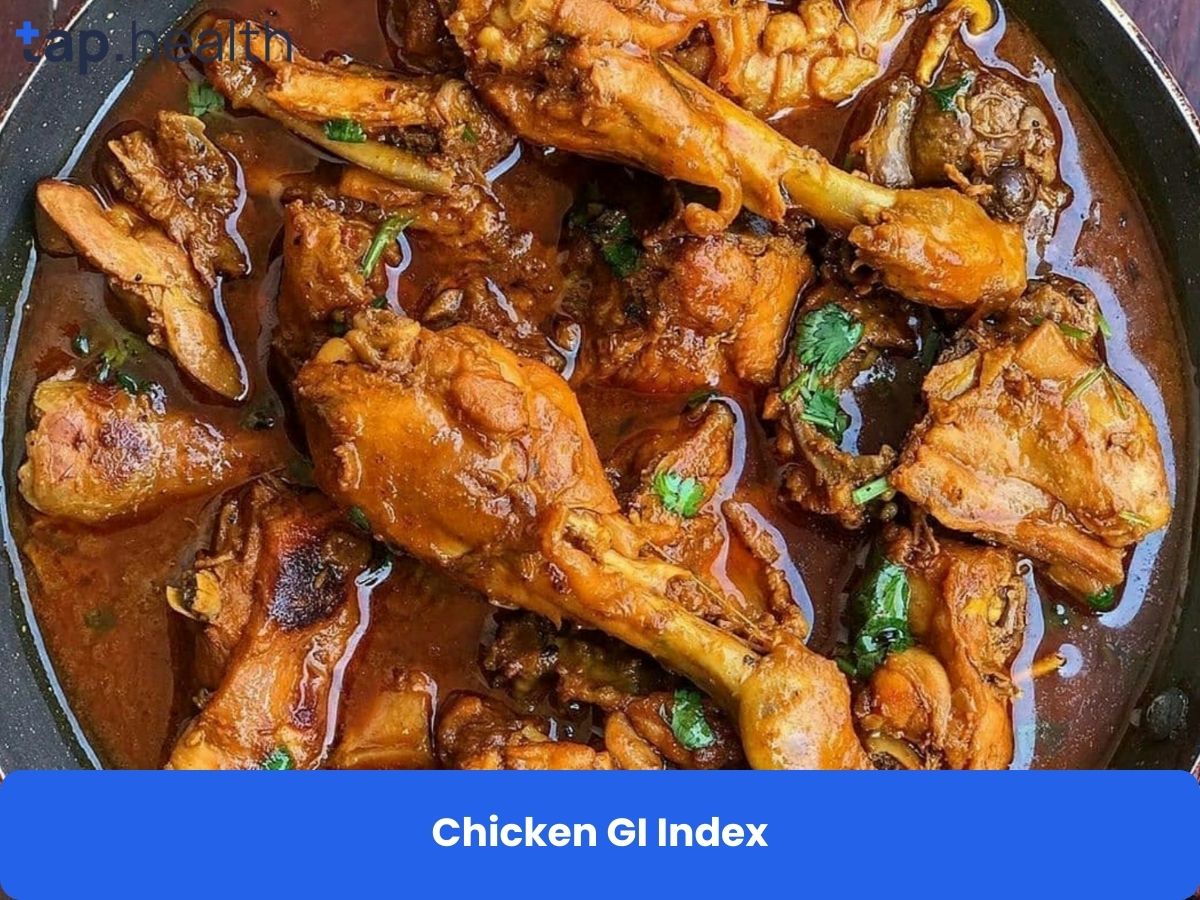Living with Type 1 Diabetes is like being the conductor of a very complex orchestra. You have to keep a close eye on every instrument—your insulin, your food, your activity—to make beautiful music, which in this case, means stable blood sugar levels. And when a craving for a big, comforting bowl of pasta hits, it can feel like the whole orchestra is about to go out of tune.
You’ve probably seen gluten-free pasta everywhere in the supermarket. It’s colourful, it’s trendy, and it’s often marketed as a “healthier” option. This naturally leads to a big question for someone with Type 1 Diabetes: Is gluten-free pasta a better choice for me?
The answer isn’t a simple yes or no. It’s a “maybe, but it depends.” This article will break down everything you need to know in simple, easy-to-understand language. We’ll look at what gluten-free pasta is made of, how it affects your blood sugar, and how you can enjoy it without sending your glucose levels on a rollercoaster ride. Let’s dig in.
What Exactly is Type 1 Diabetes? A Quick Refresher
Before we talk about pasta, let’s quickly remind ourselves what we’re dealing with. Understanding your body is the first step to making smart food choices.
The Role of Insulin
Think of your body’s cells as little houses that need energy to work. This energy comes from glucose, a type of sugar in your blood. Insulin is like the key that unlocks these houses to let the glucose in.
In Type 1 Diabetes, your body’s immune system, which normally fights off germs, gets confused. It attacks and destroys the cells in your pancreas that make insulin. So, no keys are being produced. This means glucose can’t get into the cells for energy and instead builds up in your bloodstream, causing high blood sugar levels.
The Food-Blood Sugar Connection
Since people with Type 1 Diabetes don’t make their own insulin, they need to take it via injections or a pump. Managing this external insulin with the food you eat is the core of diabetes management. Carbohydrates—found in foods like bread, rice, and, of course, pasta—have the biggest impact on your blood sugar. When you eat carbs, your body breaks them down into glucose. That’s why carb counting and dosing the right amount of insulin for those carbs is so important.
So, What is Gluten-Free Pasta, Really?
You might think “gluten-free” automatically means “low-carb” or “diabetes-friendly.” This is the most common mistake people make, and it’s a crucial one to clear up.
Gluten is Not the Same as Carbohydrate
Gluten is a protein. It’s found in grains like wheat, barley, and rye. It’s what gives regular pasta its chewy, stretchy texture. Gluten-free pasta is simply pasta made without these grains. Instead, it uses other flours.
But here’s the key point: These alternative flours are still full of carbohydrates. In fact, they can sometimes be even higher in carbs than regular wheat pasta!
Common Ingredients in Gluten-Free Pasta
Gluten-free pasta can be made from a wide variety of ingredients. Some of the most popular ones are:
- Rice Flour: This is very common. White rice flour is high in carbohydrates and can spike blood sugar quickly.
- Corn Flour (Maize): Another common base that is carb-dense.
- Quinoa: A better option! Quinoa is a complete protein and has more fibre than rice or corn.
- Lentils and Pulses: Think red lentil pasta, chickpea pasta, or black bean pasta. These are often the best choices for diabetes, and we’ll see why soon.
- Buckwheat: Despite the name, it’s not related to wheat and is gluten-free. It has a good amount of fibre.
- Other Starches: You’ll often see ingredients like tapioca starch or potato starch mixed in. These are pure carbs with little nutritional value.
So, when you pick up a box of gluten-free pasta, the first thing you must do is turn it around and read the nutrition label. Don’t just assume it’s better for your blood sugar.
The Big Question: Is Gluten-Free Pasta Good for Blood Sugar Control?
Now, let’s get to the heart of the matter. How does swapping your regular atta or semolina pasta for a gluten-free version affect your glucose levels?
The Glycemic Index (GI) Factor
The Glycemic Index (GI) is a scale that ranks how quickly a carbohydrate-containing food raises your blood sugar levels.
- High GI foods (like white bread, white rice) are digested quickly and cause a rapid spike.
- Low GI foods (like whole grains, legumes) are digested slowly, leading to a gradual rise.
Many gluten-free pastas, especially those made mainly from white rice flour or corn flour, have a high Glycemic Index. This means they can raise your blood sugar just as fast, if not faster, than regular white pasta.
The Fibre and Protein Advantage
This is where things get interesting. Not all gluten-free pastas are created equal. The ones made from legumes—like chickpea pasta, red lentil pasta, or edamame pasta—are a different story.
These legume-based pastas are typically:
- Higher in Protein: Protein helps you feel full for longer and can slow down the digestion of carbohydrates, leading to a more gradual blood sugar rise.
- Higher in Fibre: Fibre is a superstar for diabetes management. It isn’t digested by your body, so it doesn’t raise your blood sugar. Instead, it slows down the overall digestion process, preventing those sharp spikes.
So, a plate of chickpea pasta will almost always be a better choice for blood sugar control than a plate of regular pasta or rice-based gluten-free pasta.
The Importance of Portion Control
This is the golden rule, no matter what type of pasta you choose. A huge portion of even the healthiest, highest-fibre pasta will deliver a large amount of carbohydrates, requiring a significant dose of insulin. Always measure your portions. A good starting point is about ½ to ¾ cup of cooked pasta, and then see how your body responds.
When is Gluten-Free Pasta a Must-Have for Type 1 Diabetes?
For most people with Type 1 Diabetes, choosing gluten-free pasta is a matter of preference. But for one group, it’s an absolute necessity.
The Link with Coeliac Disease
There is a strong genetic link between Type 1 Diabetes and Coeliac Disease. Coeliac Disease is an autoimmune disorder, just like Type 1 Diabetes. When someone with Coeliac eats gluten, it triggers an immune response that damages their small intestine. This can lead to poor nutrient absorption, stomach pain, fatigue, and other serious health problems.
If you have Type 1 Diabetes and are also diagnosed with Coeliac Disease, a strict, 100% gluten-free diet is not a choice—it is essential medical treatment. In this case, gluten-free pasta becomes a vital part of your diet.
Getting Tested for Coeliac Disease
If you experience ongoing digestive issues, unexplained low blood sugars (because of malabsorption), fatigue, or skin rashes, talk to your doctor about getting tested for Coeliac Disease. It’s important to do this before you start a gluten-free diet, as cutting out gluten can make the test results inaccurate.
How to Choose the Best Gluten-Free Pasta for Diabetes Management
Walking down the gluten-free aisle can be overwhelming. Here’s a simple step-by-step guide to picking the winner.
Step 1: Read the Nutrition Label Like a Pro
This is your most important tool. Don’t just look at the “gluten-free” claim. Focus on:
- Total Carbohydrates: This is the number you’ll use for carb counting. See how many carbs are in the suggested serving size.
- Dietary Fibre: Look for a pasta that has at least 4-5 grams of fibre per serving. The higher, the better.
- Protein: Aim for 7-10 grams of protein or more per serving.
- Ingredients List: The first ingredient should be a legume (chickpea, lentil, black bean) or a whole grain like quinoa or buckwheat. Avoid brands where the first ingredients are white rice flour, corn flour, or tapioca starch.
Step 2: Compare Different Types
Let’s imagine we’re in the supermarket, comparing three boxes:
- Box A: White Rice Pasta
- Carbs: 42g | Fibre: 2g | Protein: 4g
- Verdict: Not great. High carbs, low fibre and protein. Likely to cause a spike.
- Box B: Corn and Rice Blend Pasta
- Carbs: 40g | Fibre: 3g | Protein: 5g
- Verdict: Slightly better, but still not ideal. The fibre and protein are too low to make a real difference.
- Box C: Red Lentil Pasta
- Carbs: 35g | Fibre: 5g | Protein: 13g
- Verdict: Excellent! Lower in carbs, and much higher in fibre and protein. This is the one to choose.
Step 3: Don’t Forget About Taste and Texture
Some gluten-free pastas can be mushy or have a strong flavour. Lentil pasta might have an “earthy” taste, which works well in some dishes but not others. It might take a few tries to find a brand and type you genuinely enjoy.
Making Your Pasta Meal Diabetes-Friendly: It’s More Than Just the Pasta
A healthy pasta meal for Type 1 Diabetes is like building a house. The pasta is the foundation, but you need strong walls and a roof to make it stable.
The Power of the Plate Method
Visualise your plate:
- ½ of your plate: Non-starchy vegetables (like spinach, broccoli, bell peppers, tomatoes, mushrooms). These are low in carbs and high in nutrients and fibre.
- ¼ of your plate: Your measured portion of gluten-free pasta.
- ¼ of your plate: A lean protein (like grilled chicken, fish, paneer, tofu, or lentils). This further helps to slow down digestion.
Load Up on Veggies
One of the best tricks is to add vegetables into the pasta itself.
- Mix zucchini noodles (zoodles) or carrot noodles with your regular gluten-free pasta. You get a bigger, more satisfying portion with fewer overall carbs.
- Stir finely chopped veggies like mushrooms and spinach into your pasta sauce.
Choose Your Sauces Wisely
A creamy, cheesy Alfredo sauce can be high in unhealthy fats and calories. A tomato-based sauce (like a simple marinara) is often a lighter choice. You can also make a delicious sauce by blending roasted vegetables like tomatoes and red peppers with some herbs.
The Magic of Healthy Fats and Protein
Adding a drizzle of extra virgin olive oil, some avocado slices, or a handful of nuts to your pasta dish adds healthy fats. As we know, including a good source of protein like grilled chicken or chickpeas is crucial. Fats and protein work together with fibre to create a “buffer” that slows the carb absorption, leading to a much gentler blood sugar curve.
What Are the Potential Downsides of Gluten-Free Pasta?
It’s not all positive. There are some things you need to watch out for.
The “Health Halo” Effect
This is a psychological trap. Because a product is labelled “gluten-free,” we often assume it’s automatically healthy and lower in calories. This can lead to overeating. Remember, gluten-free junk food is still junk food.
Nutritional Gaps
Regular whole-wheat pasta is often fortified with vitamins and minerals like B vitamins and iron. Many gluten-free pastas are not fortified, which could mean you miss out on these nutrients if you switch completely.
Higher Cost
Let’s be honest, gluten-free products are almost always more expensive than their regular counterparts. This can be a significant factor for many families.
Gluten-Free Pasta vs. Other Diabetic-Friendly Alternatives
Pasta isn’t the only way to satisfy that craving. How does it stack up against other options?
Compared to Whole Wheat Pasta
If you don’t have Coeliac Disease, a 100% whole wheat pasta can be a fantastic choice. It has more fibre than regular white pasta and most rice-based gluten-free pastas. It’s often cheaper, too. For someone without gluten issues, a small portion of whole wheat pasta might be just as good, if not better, than a low-fibre gluten-free option.
Compared to Vegetable Noodles (Zoodles)
Vegetable noodles made from zucchini, carrot, or sweet potato are the clear winners in terms of blood sugar impact. They are very low in carbohydrates and calories. However, they don’t provide the same “pasta experience.” They can be watery and lack the satisfying chew. A great compromise is to do a 50-50 mix with your favourite legume-based gluten-free pasta.
Compared to Shirataki (Konjac) Noodles
These noodles are made from the konjac plant and are extremely low in carbs and calories. They are a great option for keeping blood sugar perfectly flat. The downside? They have a unique, slightly rubbery texture and a distinct smell when you open the packet (which rinsing can fix). They are an acquired taste but a powerful tool for diabetes management.
Final Verdict: Should You Make the Switch?
So, after all this, what’s the bottom line?
Gluten-free pasta can be a good choice for Type 1 Diabetes, but only if you are smart about which one you pick.
- If you have Coeliac Disease, you have no choice, and you should focus on the legume-based or quinoa-based options for the best blood sugar results.
- If you do not have Coeliac Disease, you don’t need to switch to gluten-free pasta for diabetes management. A small portion of whole wheat pasta might work just as well for you.
- The best choice for almost everyone with Type 1 Diabetes, gluten-free or not, is a pasta made from lentils, chickpeas, or black beans because of its high protein and fibre content.
The most important thing is to be a detective. Read the labels, know your carbs, and always pair your pasta with plenty of veggies and protein. Test your blood sugar before you eat and 2-3 hours after to see how a new food affects you personally. Your body will give you the final answer.
Real-Life Scenario
Imagine someone with Type 1 diabetes who switches from regular wheat pasta to rice-based gluten-free pasta. Even though it’s gluten-free, they notice higher post-meal blood sugar readings. This happens because rice-based pasta digests quickly.
However, when they switch to lentil or chickpea pasta, their blood sugar remains more stable due to the extra fiber and protein. The key takeaway is to choose the right type of gluten-free pasta, not just any gluten-free option.
Expert Contribution
Endocrinologists and dietitians note that gluten-free does not automatically mean healthier for people with diabetes. According to research from the American Diabetes Association, macronutrient balance—especially fiber and protein content—matters more than the absence of gluten.
Experts recommend reading nutrition labels carefully and pairing pasta with vegetables, lean protein, and healthy fats to slow down glucose absorption.
Recommendations Grounded in Proven Research and Facts
- Check ingredients – Opt for legume-based or quinoa pasta rather than rice or corn pasta.
- Monitor blood sugar – Track glucose responses to different gluten-free pasta types to identify what works best.
- Watch portions – Even gluten-free pasta can cause spikes if eaten in large quantities.
- Add fiber and protein – Combine with veggies or grilled chicken to balance your meal.
- Don’t assume “gluten-free” equals diabetic-friendly – Always read the nutrition facts for total carbs and fiber.
Frequently Asked Questions (FAQs) on Is Gluten-Free Pasta Good for Type 1 Diabetes?
1. Can eating gluten-free pasta help me reduce my insulin dose?
Not necessarily. The amount of insulin you need is based on the total carbohydrates you eat. If your gluten-free pasta has the same or more carbs than regular pasta, you will need a similar or larger insulin dose. However, if you switch to a high-fibre, high-protein legume pasta, the slower digestion might lead to a less sharp peak, which could mean your insulin works more effectively, but your total bolus dose for the carbs should still be calculated as usual.
2. I don’t have Coeliac Disease. Is there any benefit for me to go gluten-free?
For the general population without Coeliac Disease or a genuine gluten sensitivity, there is no proven health benefit to a gluten-free diet. For people with Type 1 Diabetes, the only benefit would come from consciously choosing healthier, high-fibre gluten-free options like lentil pasta over regular white pasta. It’s the nutritional profile of the specific food that matters, not the absence of gluten.
3. What is the healthiest gluten-free pasta for a person with diabetes?
Hands down, pastas made from a single legume or pulse are the healthiest. Look for:
- 100% Red Lentil Pasta
- 100% Chickpea Pasta (also called chana pasta)
- Black Bean Pasta
- Edamame Pasta
These are winners because of their perfect combination of lower net carbs, high fibre, and high protein.
4. Can gluten-free pasta help with weight loss for type 1 diabetics?
Only if it helps you create a calorie deficit. Gluten-free pasta is not a weight-loss food. In fact, some varieties are higher in calories. However, switching to a legume-based pasta can help you feel fuller and more satisfied for longer because of the protein and fibre, which might prevent overeating and snacking later. This could indirectly support weight loss.
5. How do I cook gluten-free pasta to prevent blood sugar spikes?
A great tip is to cook it al dente (firm to the bite). When pasta is cooked al dente, it has a lower Glycemic Index because it takes longer for your body to break down the starches. Also, always cool and reheat your pasta if possible! When cooked pasta is cooled, some of the digestible carbs turn into “resistant starch,” which acts like fibre and has a minimal impact on blood sugar. A pasta salad made with chickpea pasta can be an excellent diabetic-friendly meal.
6. Are there any Indian gluten-free pasta alternatives?
Absolutely! Indian cuisine offers many naturally gluten-free options that are fantastic for diabetes:
Pulses and Legumes: Dishes made from chana dal, moong dal, or whole lentils are inherently gluten-free, high in protein, and brilliant for blood sugar control. A bowl of dal is often a better choice than a plate of pasta.
Brown Rice: Instead of white rice, choose brown rice for more fibre.
Millets: Foxtail millet (kangni), barnyard millet (sama/saamak), and finger millet (ragi) are nutrient-powerhouses with a low GI. You can make upma, pongal, or khichdi with them.



